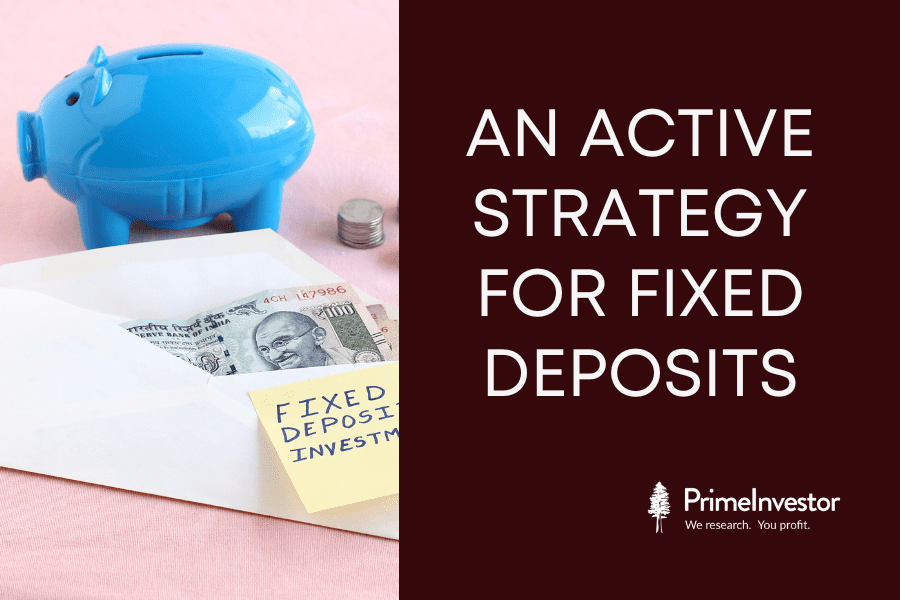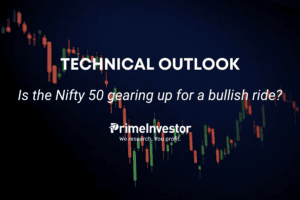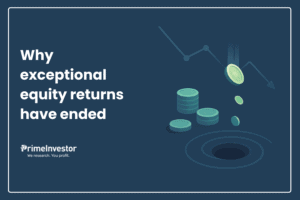It is the fashion for personal finance gurus and social media influencers to begin their talks by dissing FDs. FDs are dumb investments, they say, before urging you to migrate to equities, or exotic things like options trading or covered bonds.
But the humble fixed deposit can serve a very useful purpose in your portfolio by acting as a source of ready liquidity and acting as a bedrock for your safe money. That’s why we have Prime Deposits, our list of FD recommendations. It is quite possible to generate positive real returns on your FDs through an active strategy for fixed deposits. But can an active strategy really go with FDs? Of course! Here’s how you can do it.

Choosing the company
Investors looking to park their money in FDs have three broad classes of entities to consider:
- Banks. Within banks, you can have scheduled commercial banks, urban co-operative banks (UCBs) and small finance banks (SFBs).
- Deposit-taking NBFCs. Within NBFCs, there are government-owned and non- government owned NBFCs.
- Companies that accept FDs. In the corporate deposit market, there are companies engaged in a variety of businesses from manufacturing auto parts to pressure cookers.
So how do you choose between these entities?
Well, many retail investors tend to compare FD interest rates across different tenures and park their money with the ones offering the highest rates. This approach is faulty, as it ignores the risk attached to your interest and principal repayments.
In FDs, as in any other investment, higher returns usually go with higher risks. In FDs, risk can manifest in the form of a delay or default in your repayments, which you’d like to avoid at all costs.
At PrimeInvestor, we apply three filters to gauge the risks inherent in a deposit-taking entity when we draw up Prime Deposits. You can use them too.
#1 Regulations and safeguards
One, we look at how regulated the entity is and what are the safeguards available to FD investors. Banks in India are tightly regulated by RBI with the special purpose of ensuring that there is limited risk of default on their FDs. Indian banks are required to hold 18.5% of their deposits in government securities as Statutory Liquidity Ratio (SLR) and another 4.5% as deposit with RBI as Cash Reserve Ratio (CRR), providing for a buffer against sudden demands by depositors for repayments. Your deposits with a bank upto a Rs 5 lakh per account holder, are also protected by deposit insurance (we discussed the recently changed insurance rules here).
Coming to NBFCs, only very few of them are authorised by RBI to accept public deposits. Such NBFCs have to stick to a cap on the deposits they take relative to net worth, maintain a portion of their funds in highly liquid securities and disclose their cash flows projections in their quarterly results, which tell you if there’s any risk of mismatch.
#2 Disclosures
Two, we look at the financial disclosures of the entity and the recourse available to the depositor in case of default. Only listed NBFCs are in the deposit-taking space, so you do get quarterly disclosures of their finances.
Based on the business they run, some NBFCs or banks do tend to be riskier than others. An NBFC that is into housing finance like HDFC is certainly safer than one that is into SME financing like say, Shriram City Union. We’d therefore expect the latter to offer higher rates. NBFCs need to get their FDs rated by credit rating agencies and you can use that as a risk gauge too (though the DHFL case tells us you can’t go wholly by this!). If you face a problem with either banks or NBFC FDs, you can complain to the ombudsman and to RBI as regulator.
FDs raised by companies, in contrast, are very laxly regulated. If you face a problem of delay or default, your only recourse is to complain to the Ministry of Corporate Affairs. Plus, the quality of companies that come to the FD market varies widely with some (like Wheels India) well governed and able to borrow freely from markets, while others (like jewellery companies) are poorly governed and tap FD investors because of their difficulty in borrowing at the same costs from markets.
#3 External factors
Three, we look at external factors such as the economic and rate cycle and liquidity conditions in the financial markets. From an economic cycle point of view, we think commercial banks are the only all-weather option. Given RBI’s paranoia about allowing any commercial bank to fail, systemically important banks like SBI, HDFC Bank, ICICI Bank et al are the safest parking grounds for your money but other commercial banks are good too.
You can use our Bank FD tool, updated quarterly, to check which banks rank high, medium and low on confidence, based on their latest financials. We rate select SFBs as safe too. Though they carry deposit insurance, we do not recommend investing in UCB FDs because their shareholders often double up as borrowers and they have had high rates of failure in the past.
Select NBFCs with AAA rating (from CRISIL or ICRA) come next on the safety scale. While NBFCs can offer attractive rates, we think of them as cyclical bets. When the economic cycle is in an upturn, you can add more NBFCs to your FD mix because their business risks abate. If there’s a crisis on in the economy or financial system (like Covid or the IL&FS default), NBFC FDs are avoidable because liquidity problems can spiral pretty fast.
We don’t see any logic in investing in manufacturing companies tapping the FD market. Companies tapping bond markets tend to be of better quality and offer far better rewards for risk.
Thinking in spreads
Most retail folk looking to invest in FDs get taken in by absolute returns. They focus on the interest rates bandied about by FD-raising entities and believe that if they’re getting 8.5-9%, that automatically makes for a great FD option.
But this approach suffers from two flaws. It doesn’t account for where we are in the interest rate cycle. An 8% FD return may have been attractive when RBI’s repo rate was 4%, but the same 8% from this entity would be unattractive when the repo rate has jumped to 5.9%. Absolute rates also don’t tell you anything about the extra risk you may be taking on with the entity.
This is why at PrimeInvestor, we evaluate FD (and bond) returns in terms of the spreads (or extra rate) they offer over safe instruments. To evaluate an FD at any given point in time, running a check on the yields offered by Government of India bonds is your best bet. When comparing, be sure to compare the yield on the FD against the yield on a government bond of similar tenure.
This page on CCIL is a good option to check prevailing yields on government securities of varying tenors. This can sometimes be an eye-opener on the raw deal you’re getting on some FDs.
For instance, a bank FD that offers you a 6% return for 1 year is no big deal today, because the government of India is raising a 364 T-bill for 6.98%! If you’re not an RBI Retail Direct Gilt account holder, you can stack up the rates offered on FDs against those on small savings schemes, announced by GOI every quarter. During Covid times, there were many occasions when small savings offered better rates than banks or even NBFCs; and with their sovereign guarantee this makes them a better bet.
Apart from measuring the rate offered on an FD against safe instruments, you also need to evaluate it against similar entities. Based on the business they run, some NBFCs or banks do tend to be riskier than others. As mentioned earlier, an NBFC that is into housing finance like HDFC is certainly safer than one that is into SME financing like Shriram City Union. We’d therefore expect the latter to offer higher rates.
We recently rated the FD programme of TN Power Finance Corporation offering 7-8% as a not-so-great option, because of its exposure to the troubled power discom sector, which leads to a low credit rating.
Next time an FD advertisement pops up for your consideration, do measure the spreads against g-secs or AAA rated entities of the same maturity and you may find the rates are not so hot!
Taking duration calls
Making a positive real return from a FD, even from a bank or top-rated NBFC, is not tough if you take active calls on the duration or maturity period. Did you know that the lucky folk who locked into 5-year bank FDs in 2015 made 8.5% until 2020, even as rates on new deposits dropped as low as 5.25% in this period? Or that investors who invested in 5-year bank FDs in 2012 were able to lock at 9.25% until 2016, even as market FD rates plummeted to 6.25%?
Just like stock markets, interest rates go through cycles too. Therefore, if you manage to lock into long-term FDs close to the peak of a rate cycle, you can sit tight and enjoy high returns on a safe avenue for the next 5 years. Timing the rate cycle is not as hard as timing your entry into stocks, as you only need to track interest rates.
As the table below shows, interest rate cycles in India usually top out when FD rates are 8.5-9% and bottom out when they hit rock-bottom at 5-6%.
To take active maturity calls, all you need to do is to track the FD rates. When rates are 8% or higher (don’t wait for 9% which is a rarity), try to up your allocation to 5-year FDs. When rates are at 5-odd%, keep your FD maturities as short as possible (upto 1 year) so that when better rates come along, you can quickly switch.
Using such active duration calls based on the rate cycle would have helped you keep your FD rates at 8% plus amid ups and downs in the inflation and rate cycle over the last 20 years. This page from RBI gives you access to the monthly changes in FD rates of PSU, private and other banks.
Capital safety at all times
While you can use all of the above tips and tricks to maximise the returns from FDs, we recommend that there’s one thing you don’t do - park your safe money with unregulated or poorly rated entities in an effort to earn higher-than-FD returns.
Every scam scheme out there in the market likes to benchmark itself to bank FDs and claim superior returns. But multiple rules set by RBI protect investors from bank FDs and FDs from regulated NBFCs, from default and governance risks. There’s simply no point in abandoning these safety shields for a few hundred basis points in returns. This earlier article of ours discussed in detail how you can spot and stay a mile away from scam schemes masquerading as FDs.
We strongly believe that a FD is an instrument where capital safety must be paramount. While taking on the risk of capital losses in equities may compensate you with a higher return, there’s no such reward for taking on default risk in FDs. Investors who lost money in risky corporate FDs and DHFL will tell you that the higher interest they earned certainly didn’t compensate them for the delay, uncertainty and capital losses they faced when the entity defaulted.








10 thoughts on “An active strategy for fixed deposits”
Also wanted to know…IndusInd bank is giving 7.75% on their FD for 2 years duration. Is this a safe option for my senior citizen father? Any issues with IndusInd bank in general? Is it a ‘safe’ bank?
Yes is a good bank
Thank you for the article! Very much needed at this hour as many self-turned financial gurus across social media platforms advising to shun the FD’s and recommending the fancy & glittering products.
Reiterated the point so well that FD’s offer us the most important aspect – safety along with decent returns which can meet inflation.
Good article! Instead rejecting FD at the face. We can also get real returns..excellent. Pl add one more angle, asset allocation.
Does Shriram Transport Finance Company Ltd falls under regulated NBFC? They seems to be having good ratings and are offering FDs.
Yes it is
which are other regulated NBFC? Are they safe
Bajaj Finance, M&M financial, Sundaram Finance, HDFC
How the rate of interest fixed on RBI floating bond ?
It is fixed at 0.35% above the current rate on the National Savings Certificate announced by GOI
Comments are closed.